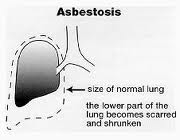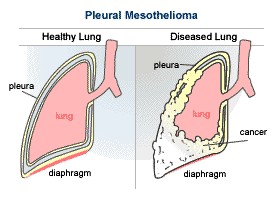Asbestosis Big Problem in Northern Ireland

The Northern Ireland General Register Office, the province’s record keeper, said that mesothelioma and asbestosis were the primary or secondary causes of some 75 deaths annually.
In little more than five years, there have been more than 300 estimated deaths in Northern Ireland from asbestos exposure, according to a U.TV article, citing a recent government report.
This government report also suggests there were possibly another 40 lung cancer deaths each year where asbestosis or mesothelioma were contributing factors. Mesothelioma is a rare and deadly disease that destroys the linings of the heart, lungs or abdomen. Exposure to asbestos is nearly always the cause of mesothelioma. And asbestosis is specifically a lung disease caused by inhaling asbestos.
The situation is serious were unlike the United States which phased out asbestos in building materials in the 1980s, asbestos continued to be used in Northern Ireland until about 2000. The Health and Safety Executive for Northern Ireland (HSENI) organization predicts the current number of deaths to rise. It has organized free training called “Asbestos Training Pledge NI” as a response to help local construction workers protect themselves from asbestos exposure.
Asbestos is a fibrous mineral once used extensively in building materials because of its high tensile strength, durability, high availability, and low cost. Given its’ early widespread adoption in the United States, asbestos continues to be a problem there as well. Since the 1970s, research has linked asbestos exposure definitively to multiple painful and deadly diseases, such as mesothelioma.
Many manufacturers knew their asbestos products posed serious health risks, but some hid this information from both their workers and the public. Have you or a loved one developed mesothelioma after exposure to asbestos while at a workplace? If so, then call a Lawyer who is an expert in Mesothelioma and Asbestosis, and ask them for a free legal consultation about a potential mesothelioma lawsuit.
More Mesothelioma and Asbestosis Information









